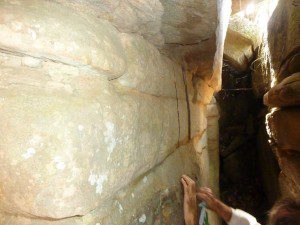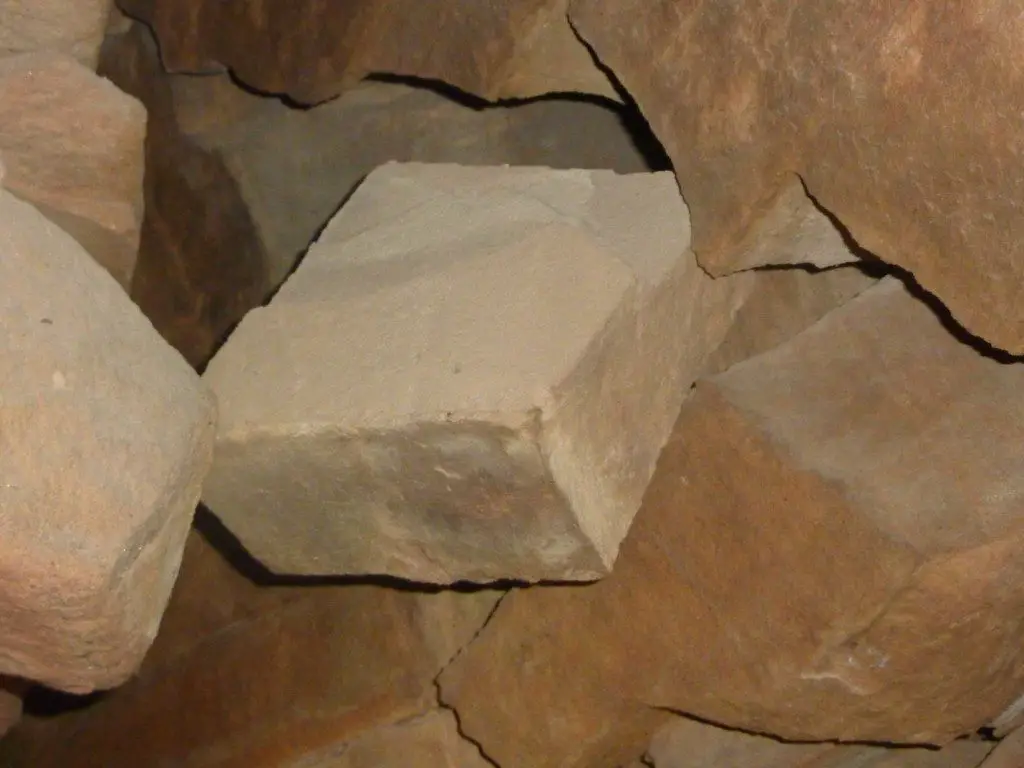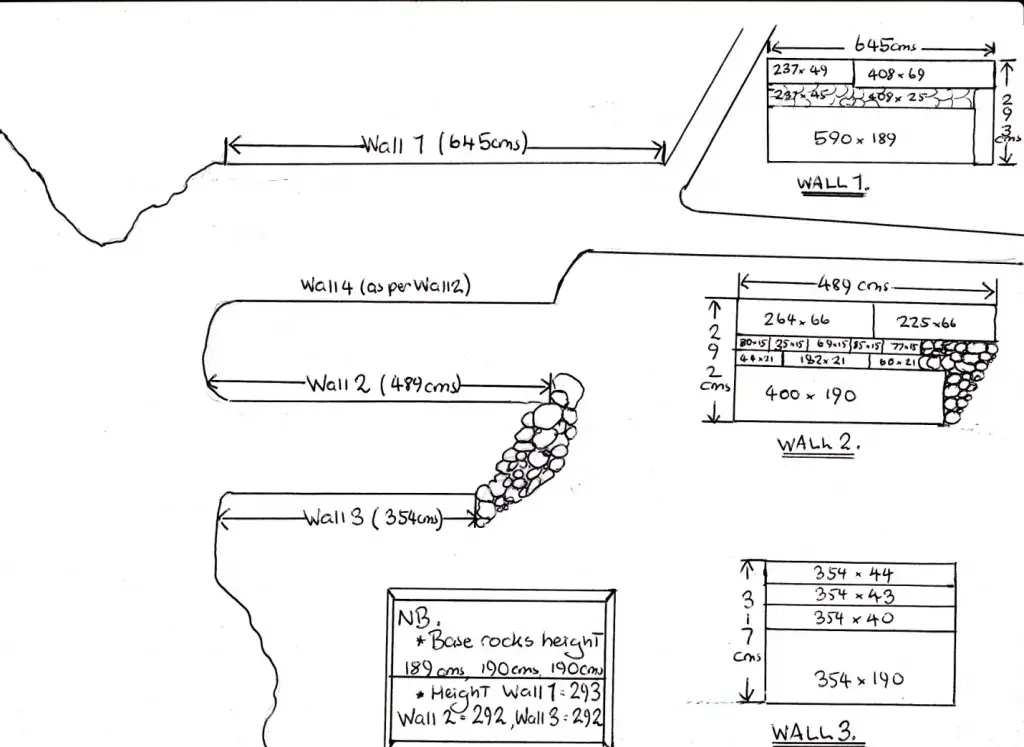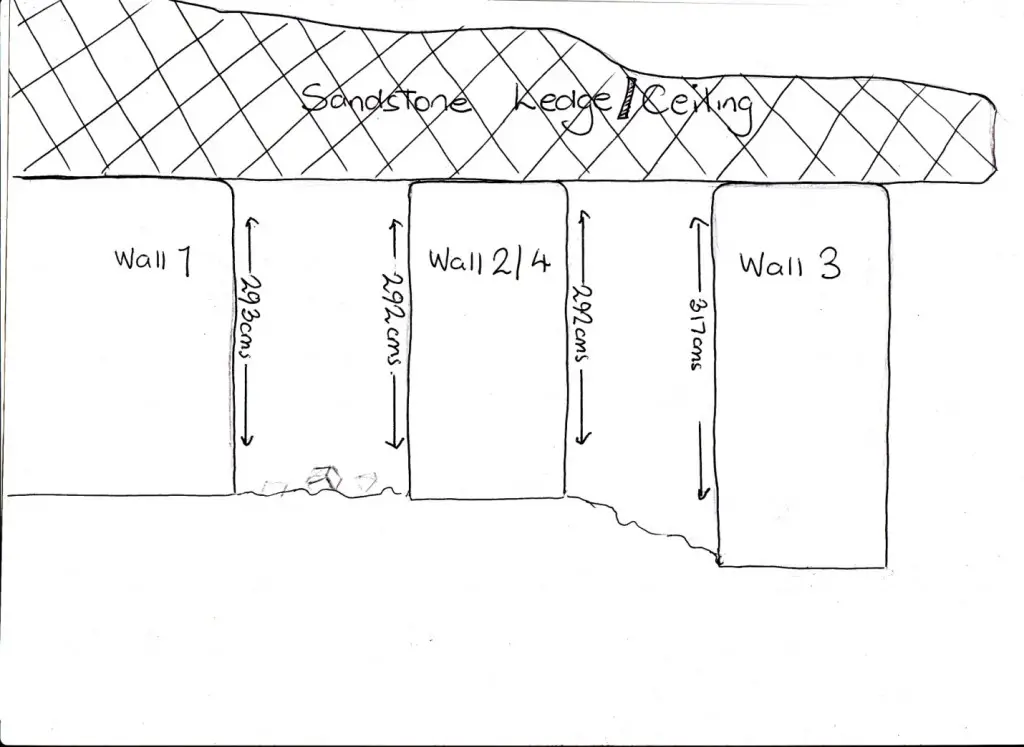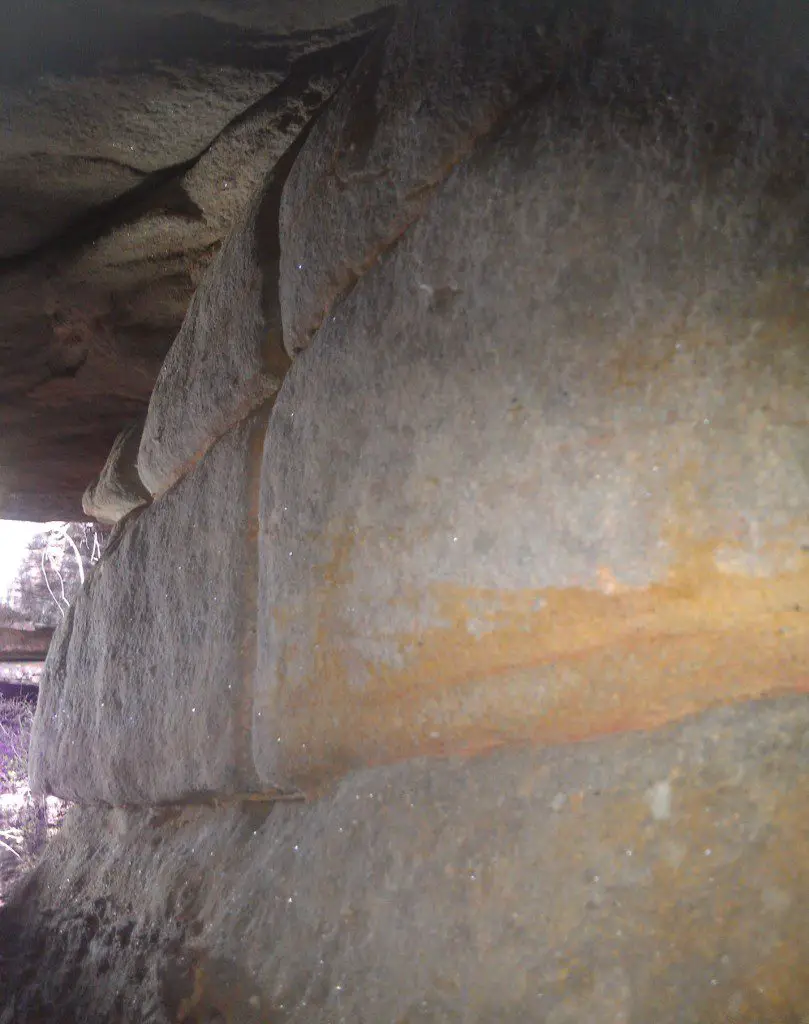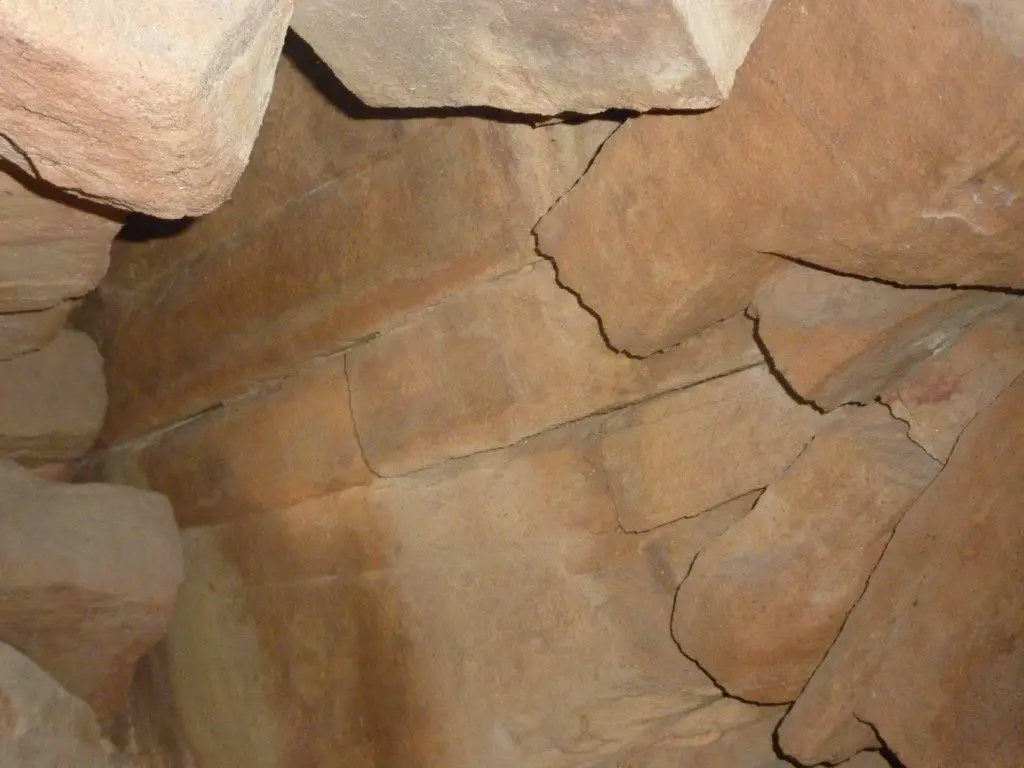

| Visitors Now: | |
| Total Visits: | |
| Total Stories: |

| Story Views | |
| Now: | |
| Last Hour: | |
| Last 24 Hours: | |
| Total: | |
Another Block in the Wall: Uncovering an Ancient Underground Tunnel Entrance in NSW Australia
Contributing Writer for Wake Up World
My team and I have been, and returned, to many sacred and historic sites that have been ruthlessly vandalised. Unfortunately, the wanton disregard of Original engravings and stone arrangements, some thousands and often tens of thousands of years old, is so much a part and parcel of archaeology in Australia. So commonplace is this desecration of well known or easily found sites, that our first priority has always been focused around preventing this outrageous disrespect; what the archaeology means and who was responsible for it must always take a back seat to its preservation.
For this reason, on occasions, I have been deliberately obscure when supplying details in relation to situation and geography. But fortunately, the site I will discuss today will never be vandalised. Its series of tunnels and what lays beyond would never have been found by us, or anyone else. It is only because artefacts researcher and spiritual archaeologist Klaus Dona sent us a photograph with the specific location marked out, that we were now standing on this extraordinary site. Access to the site is not difficult; that would be a gross understatement. There are extremely steep slopes to negotiate and an entrance that betrays nothing to either the trained or untrained eye, except that to advance forward is fraught with real and present danger.
Our first investigation was far briefer than what was needed, but we had two sites to examine on that day and as this one was the unknown part of our day, more time was dedicated to the other site which promised tangible returns. Even getting to this site was a distraction of some magnitude, maintaining balance while descending was a feat of its own. But the final stride to gain entrance was a thought-provoking effort; a four metre drop with no less than two metres to straddle across to the only foothold, followed by swinging the other foot up the slope aiming at the dirt floor at the front of the tunnels. It was an action deserving of some forward planning. Fortunately those aboard were agile of foot and adventurous of spirit, and all of us managed to negotiate the divide.
With the exception of myself the rest of the party were focused on finding an entrance of some sort. From the information we were provided, we knew the tunnel led deep inside, but we also saw the impact and damage caused by the mass of rock above – which was literally sliding down the hill and into this complex. By our estimation the there were two shafts/tunnels, one I could (being the thinnest) manage to get in nearly 10 metres before it narrowed to no more than 10 centimeters. I could see that the gap continued inwards and appeared uniform and quite long, but no-one in our group could advance any further.
The rest of the team were not deterred and sought out other means of entrance, but I went back to one section of the tunnel which measured close to 5 metres. We were all agreed that the wall was so similar to the ancient walls in Chile and Peru. The joins were so precise, only the thinnest of twigs could be inserted 15 maybe 20 cms inside the widest gap between these shaped rectangular sandstone blocks. There are four horizontal layers of sandstone blocks, each layer laid perfectly flat with a flat sandstone shelf of considerable dimensions and tonnage sitting on this supporting wall. I tried to identify a possible geological process that could create such a complex and intricate alignment and came up empty every time.
In some respects our limited time on site was a blessing as I really had nothing to offer bar trying to make sense of what was obviously a wall built to take the weight of the rock shelf, along with the huge accumulation of shaped rocks with sharp edges, flat faces and ninety degree angles. The technology needed to construct it cannot be found in any Original tool-kit, or so the experts claim. Either way for now, it was time to walk away and return to measure and analyse another day. Which I did.
It took another four months before the timing and finances allowed a return visit. Getting to the entrance seemed even more dangerous than before, or I was getting older. Despite a decidedly longer pause – heightened by visions of what a poorly placed right foot could lead to, coupled with the apparent ease with which my companion on site, Ryan, casually breached the chasm – I did remain in tact and vertical.
This time there was no intention to find a way in, all we were interested in was that one wall; anything else that may crop up was merely an afterthought. Since our last visit the damage created due to compression from above was even more evident. As before so many of the rocks laying on the floor and positioned above, sometimes precariously, were shaped and cut, but this was more of the same and only reinforced what we already knew to be true; that this construction was not a natural formation.
The wall was still there and none the worse for wear, but that will change in time. The biggest shock was my inability to perform more than one task. It was so obvious the other three walls were always there. What wasn’t immediately apparent was how alike the walls actually were; the angles and measurements denied anything other than a precision and repetition that could only come about through human hands and a metal blade.
The three base rocks vary close to 300 cms in length, but in height there is no more than a one centimeter difference. Wall 3 is 190 centimetres high, Wall 2 is exactly the same and Wall 1 is one centimeter smaller at 189 centimetres. It is remotely possible that this is merely a coincidence, but there is more than one match at hand. Wall 1 and Wall 2/4 form what we suspect to be the main entrance, the floor between is almost perfectly level, as is the rock shelve above. As such, it should come as no surprise Wall 1 measures 293 centimetres in height, while Wall 2/4 is one centimeter shorter at 292 centimetres.
Being beneath and outside the main entrance, thus possibly acting more as a support for the two inner walls, Wall 3 is down the slope and had to be built higher to support the weight of the 180 degree flat roof. This wall is 317 centimetres high and 354 cms in length. Being the furthest from the massive block of sandstone pushing against Wall 1, Wall 3 exhibits the least damage. All four layers of blocks that make up Wall 3 are complete, the bottom foundation stone is 354×190 cms, and the three layers above are basically of the same dimensions. The stone above the base block measures 354×40 cms, above that it is 354×43 cms, and the top stone, which takes the considerable weight of the sandstone above, is almost identical measuring 354×44 cms. Each shaped block is level top and bottom, creating an almost seamless join.
To begin with, Wall 2 was all there was, and as it was with Wall 3, was made up of four layers. Constructed two metres up the slope, the foundation stone is exactly the same height as Wall 3 but 46cms longer (400×190). In total the wall is 292 cms high and 489 cms at its longest point. The three horizontal layers above are not as high as those in wall 3 and need to compensate for the 25 cm rise in the floor level so that this wall can share the load with Wall 3 of the flat sandstone shelf/ceiling. The second level is made of two blocks, one 44 cmsx21 cms and the adjoining block 182 cmsx21 cms. The third layer is made up of five rectangular rocks, 20×15 cms, 25×15 cms, 59×15 cms, 65×15 cms and 77×15 cms. Being quite narrow it is quite possible there may have been two or maybe three blocks when originally constructed, but due to age and slippage above these rocks could have cracked and split. The two capstone rocks above are much thicker and obviously separate to begin with, measuring 264×66 cms and 285×66 cms.
Of particular interest, and what was originally the primary focus of this excursion into country, was that the lines and seams evident on the face of Wall 2 span around the corner and along the face of Wall 4. It is for that reason we saw no purpose in measuring this wall, they are identical to Wall 2. Moreover, we detected between layer two and three what looks suspiciously like mortar.
Previous articles by Steven Strong:
- Discovery of The First Sacred Language: Fact or Fiction?
- Australia’s Stonehenge: the History of an Ancient Stone Arrangement 40 Kilometres from Mullumbimby NSW
- The Basis of All Knowledge? Australia’s Stonehenge May Re-Write World History (Part 3)
- Australian Original Astronomical Rock Engravings Will Re-Write World History
- Re-Writing Australia’s History: The Egyptian Connection
- Reading Between the Walls and Lines: The Ancient Australian-Egyptian Connection (Part II)
- Ancient Egyptians In Australia (Part III): Yesterday’s Mistake, Tomorrow’s Salvation
- More Evidence of an Ancient Egyptian and Pleiadian Presence in Australia



